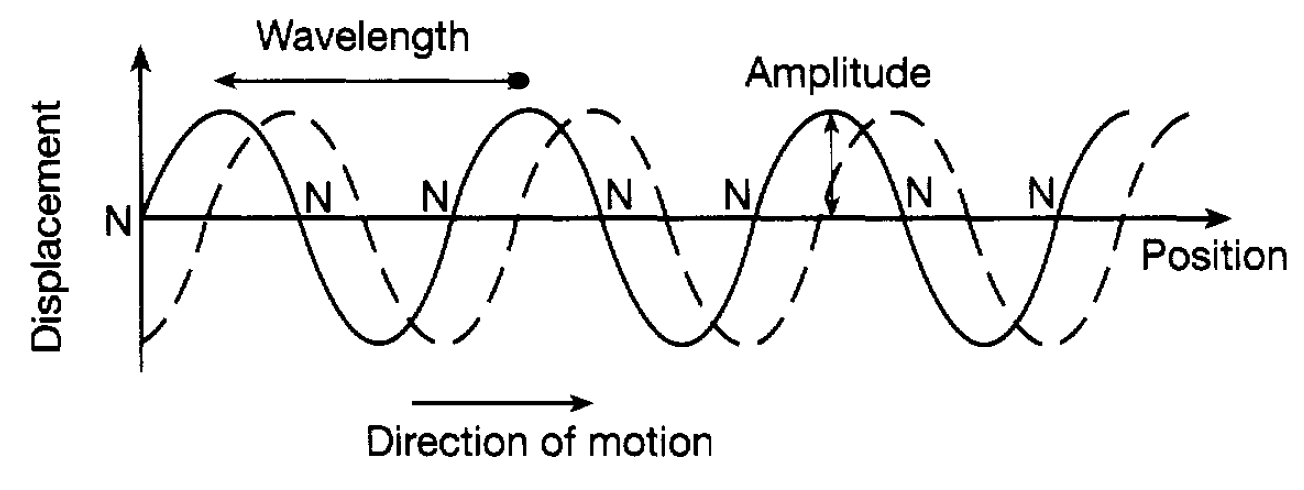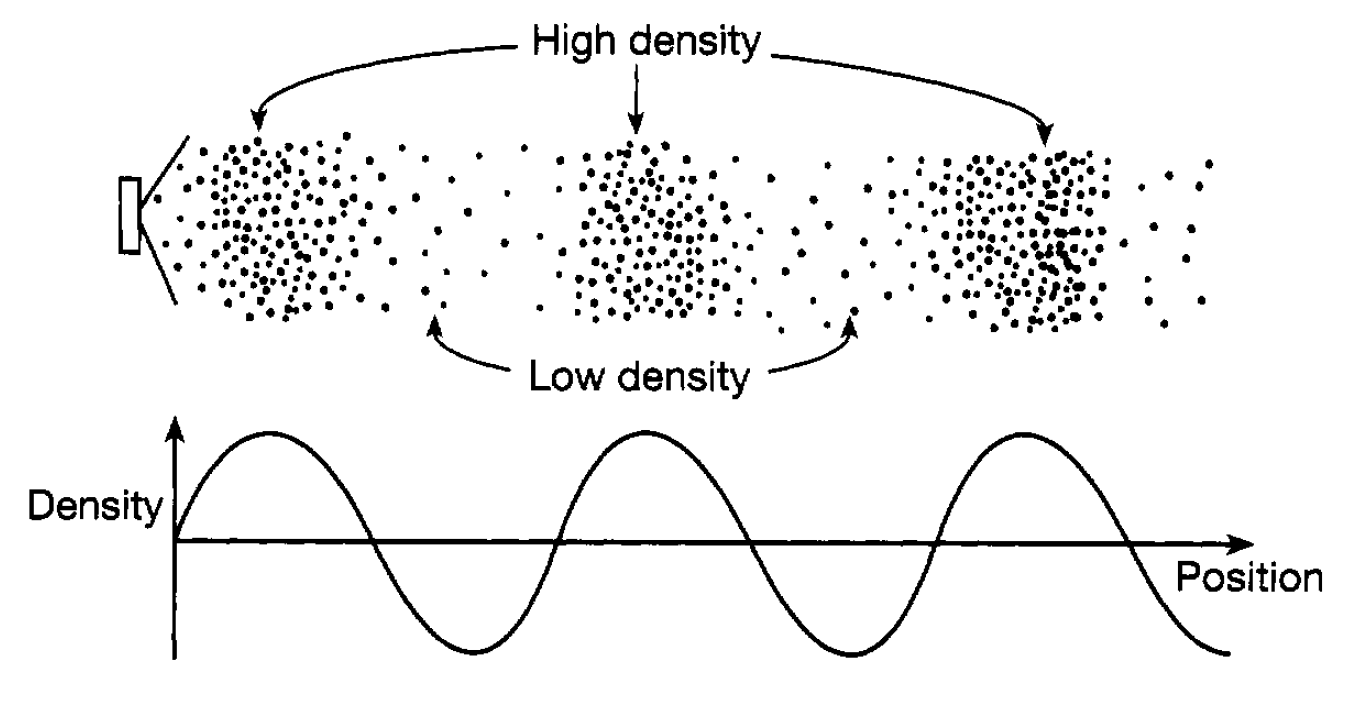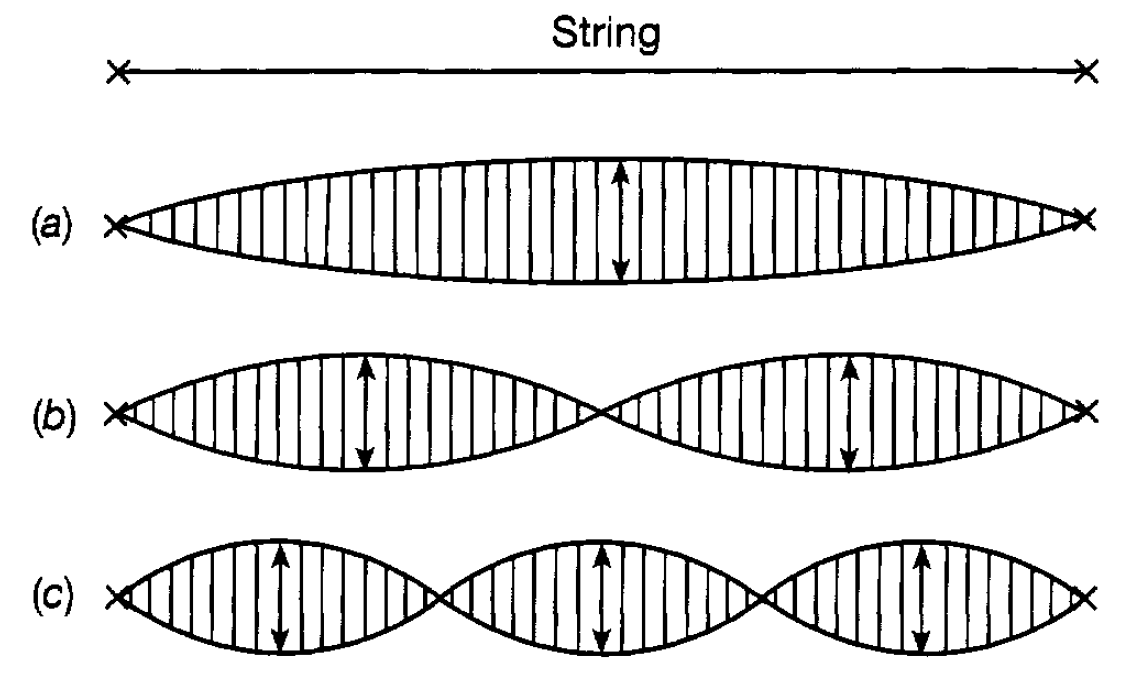
Wave Motion
 المؤلف:
Roger J Blin-Stoyle, FRS
المؤلف:
Roger J Blin-Stoyle, FRS
 المصدر:
Physics of Particles, Matter and the Universe
المصدر:
Physics of Particles, Matter and the Universe
 الجزء والصفحة:
P25
الجزء والصفحة:
P25
 18-5-2016
18-5-2016
 4830
4830
Wave Motion
Oscillating systems, if connected to the environment in some way, create waves in that environment. For example, if you oscillate your hand in a pond a wave on the surface of the water is created; an oscillating violin string creates a sound wave in the air with which it is in contact. Such waves are known as ‘mechanical’ waves and are very familiar. When we come to consider electromagnetic phenomena, we shall find that oscillating electric or magnetic systems can actually create waves in a vacuum; the waves are simply moving variations in the electromagnetic fields created by these systems, but no medium is needed to convey them through space. (Here it must be said, however, that until towards the end of the last century it was believed that they were propagated through a hypothetical medium called the aether, which was supposed to permeate the whole of space.) These latter waves will be considered later and for the moment we will confine discussion to mechanical waves. Consider a wave created on the surface of water, for example in a pond, by an oscillating system such as a wiggling hand. It has the instantaneous form shown in figure 1.1 and that form moves forward over the pond.
The wave is characterized by three quantities:
● its wavelength is the distance between adjacent common points on the wave, for example, between two successive crests (as shown);
● its amplitude is the maximum height of the wave;
● its speed is the speed with which the wave moves forward.

Figure 1.1: The essentials of wave motion. (The dotted curve shows the position of the wave a little later in time.)
Certain points on the wave (denoted by N) instantaneously have no displacement; these are known as nodes. Here it is important to recognize that it is the shape of the wave which moves forward and not the water within the shape; the water simply moves up and down as the wave moves along. This nature of waves is seen most clearly when a wave moves down a long string as one end is continually shaken up and down; the wave moves along the string but the string itself does not travel along. So a mechanical wave does not convey matter as it moves along; it does, however, by virtue of the motion of the medium in which it has been set up, convey energy. This is clearly seen in, for example, the damage done by large sea waves during a storm and by the energy obviously given to the ear drum when we hear a sound. Going back to a wave on the surface of a pond, consider a fixed point on the surface. In one second a certain number of crests will move by it; this number is the frequency of the wave and is the same as the frequency of the oscillating system which created the wave. Clearly the speed of the wave is simply the wavelength multiplied by the frequency the number of wavelengths that pass by in a second:
speed = wavelength × frequency.
Such a surface wave is known as a transverse wave since the motion of the particles of water (up and down) is perpendicular to the direction of motion of the wave. On the other hand a sound wave is longitudinal in that the particles of air conveying the wave move backwards and forwards in the same direction as the motion of the wave. This follows because the vibrating string, vocal cord, loudspeaker diaphragm etc producing the sound pushes the air in its neighbourhood backwards and forwards. The situation is illustrated in figure 1.2 for a sound wave created by a loudspeaker. The shape of the wave now measures how the density of the air varies as the wave moves along. Peaks correspond to high density (the air molecules are squashed together) and troughs to low density (the air molecules are well separated). Here it should be stressed that in practice the sound is not confined to a beam, as illustrated, but goes out in all directions like ripples created by a wiggling hand in a pond. Sound waves have a speed of around 340ms-l (760 miles per hour) in air, but travel faster in liquids and even faster in solids. Waves on the surface of a liquid travel very much more slowly whilst, at the other extreme, the speed of an electromagnetic wave is 3×108ms-l (or 186,000 miles per second). There are two important wave phenomena which it is appropriate to mention here and which will be referred to later. The first is the Doppler effect which occurs when the source of a wave motion is

Figure 1.2: Propagation of a sound wave in air from a loudspeaker.
moving. For example, if the source is moving away from the observer then the wave motion is ‘stretched out’ and occupies more space than it would have done if the wave source had been stationary. This means that the wavelength appears to be longer and, remembering the relation between wave speed, frequency and wavelength, the frequency appears to be lower. Conversely, if the source is moving towards the observer, the wave is squashed up, the wavelength is shortened and the frequency appears to be higher. This effect is well known in the context of sound when, for example, the note emitted by a police siren drops in frequency (the note becomes lower) as the vehicle comes towards an observer, passes by and moves away. The second phenomenon is known as wave interference. If, for example, the paths of two identical waves cross then the displacement caused by each of the waves separately will combine to create a single total displacement. For example, the situation may arise that at some points the trough of one coincides with the crest of another and the result is that there is zero net displacement. We then have what is known as destructive interference. At other points two crests or two troughs can coincide, leading to double-sized crests and troughs. This is known as constructive interference. Clearly the precise nature of this interference depends on the disposition of the waves. It can be readily observed in a bath by wiggling two hands in the water and seeing how the two resulting waves interfere with each other. The waves we have been discussing are known as travelling waves since the wave shape travels along in the medium. However there can also be what are known as standing waves. These occur when the medium in which the wave is travelling is confined in some way. The simplest example is a string (e.g. a violin string ) fixed at two points (figure 1.2). Since the string is fixed at each end, these endpoints of the string are stationary and must, therefore, be nodes. It then follows that the only sort of wave that can be set up on the string is one in which an integer number of half wavelengths exist between the two endpoints. A few examples of this are shown in the figure. Clearly the wave on the string does not move forwards or backwards; it is stationary or standing and is simply a vibration of the string. It, in fact, results from the String

Figure 1.3: Standing waves on a vibrating string: (a) one half wavelength; (b) one wavelength; (c) three half wavelengths.
interference between two travelling waves moving in opposite directions on the string and being reflected backwards and forwards at the fixed ends of the string. We have seen that the frequency of a wave is related to the wavelength and so it follows that only certain frequencies are allowed for a standing wave. The basic frequency, produced for example by a violinist, is by a standing wave of the form (a) and higher frequencies are produced by simply shortening the vibrating portion of the string by use of the fingers. He/she sometimes also produces standing waves of the form (b) by gently touching the string in the position of a node, so bringing that point to rest. Other stringed instruments (cellos, harps, pianos) similarly involve the setting up of standing waves on fixed lengths of string. On the other hand, wind instruments (trumpets, flutes, oboes) set up standing waves in fixed lengths of vibrating air columns. It should be noted here that in all instruments the ‘basic’ or ‘fundamental’ frequency is also accompanied by small contributions from higher-frequency standing waves. These are known as harmonics and the different mixtures of these harmonics are responsible for the widely different tones emanating from different instruments playing the same basic note. Standing waves can also be set up on the surface of a liquid confined in, for example, a tumbler. The concept of standing waves is of immense importance in physics as will become clear when we go on to consider quantum phenomena in later chapters.
 الاكثر قراءة في الميكانيك
الاكثر قراءة في الميكانيك
 اخر الاخبار
اخر الاخبار
اخبار العتبة العباسية المقدسة


